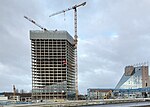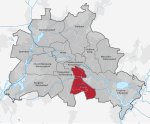Eurofurence

Eurofurence (commonly abbreviated EF) is a furry convention held in changing places in Europe every year (in Berlin, Germany since 2014 and will remain there for the time being). It was originally started in 1995 as a private gathering by nineteen European furry fans who met on the Internet. Attendance has been steadily rising since then, to 2804 at Eurofurence 23 (held in 2017), making it the largest furry convention outside the United States. The name of the convention derives from its American back-then-counterpart ConFurence, emphasising the European nature of the gathering. Since the year 2000, Eurofurence is no longer organized by individual persons but rather by the German Verein Eurofurence e.V., which serves as an administrative body for the convention. Contrary to most American furry conventions, Eurofurence traditionally took place at youth hostels. In 2007, Eurofurence was first held at a hotel (the Hotel Ringberg in Suhl).
Excerpt from the Wikipedia article Eurofurence (License: CC BY-SA 3.0, Authors, Images).Eurofurence
Ziegrastraße, Berlin Neukölln
Geographical coordinates (GPS) Address Nearby Places Show on map
Geographical coordinates (GPS)
| Latitude | Longitude |
|---|---|
| N 52.473611111111 ° | E 13.459166666667 ° |
Address
Flügel 2 (Estrel)
Ziegrastraße
12057 Berlin, Neukölln
Germany
Open on Google Maps











